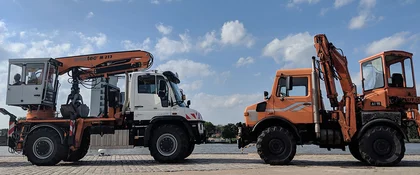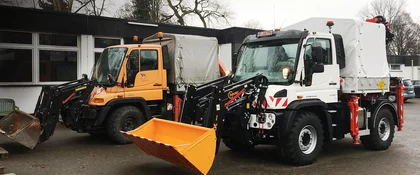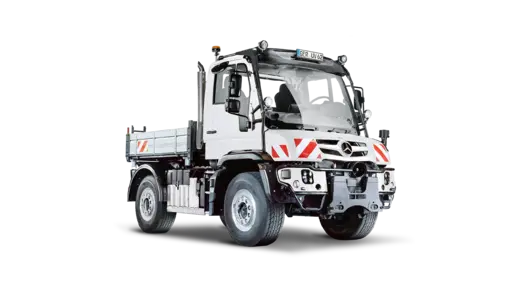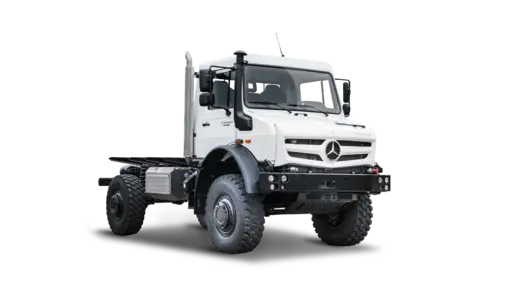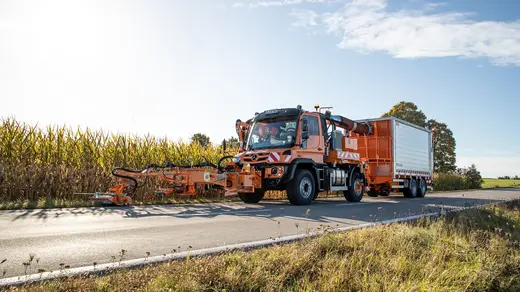Unimog implement carrier helps protect the coast in Lower Saxony.
Still waters are deceptive: the Lower Saxon Department for Water, Coastal and Nature Conservation (NLWKN) is therefore prepared when the waves once again rise dangerously high off the East Frisian Islands – and threaten a unique habitat for people and nature. Coastguards can count on a dependable companion to help them prepare: the Unimog U 430.
A vital responsibility.
2006 is a year that left a mark on the North Sea. On 1 November, the East Frisian islands were struck by one of the heaviest storm surges in the past 100 years. Dubbed the All Saints’ Flood, the calamity destroyed anchored boats, broke down on protective dunes and even catapulted heavy boats hundreds of metres onto land.
The state of Lower Saxony has its conscientious coastal protection to thank for the fact that the population was spared from harm and no lives were in danger. And it has had a reliable partner of its own for years to depend on: the Unimog.
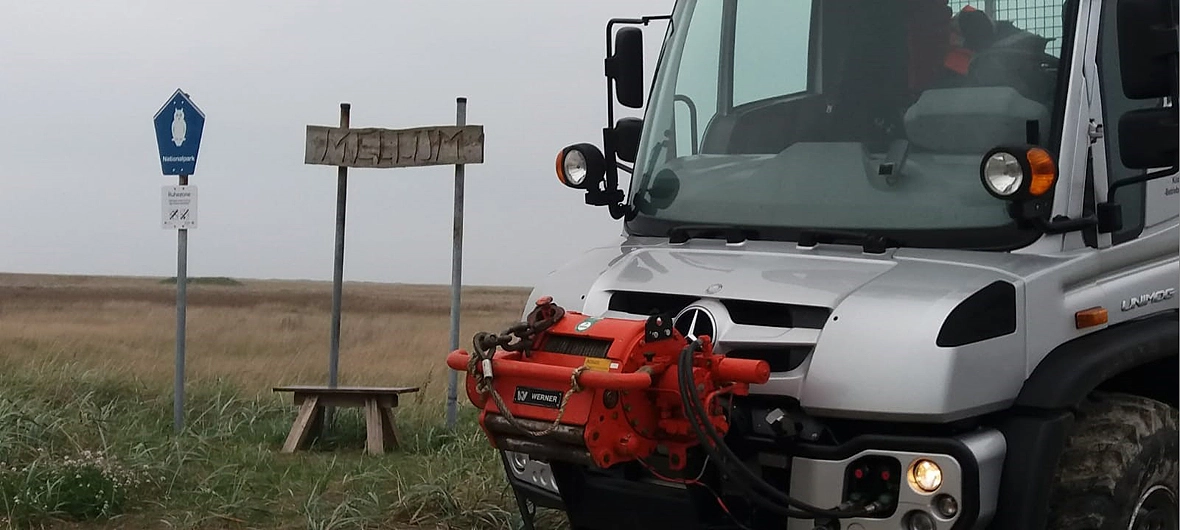
We put the Unimog to use every day.
Carina de Vries, hydraulic engineer, Hilgenriedersiel depot
Coastal protection also means environmental protection.
Carina de Vries is a singularity in the far north: “I'm the only woman who runs a depot at the NLWKN, where all the other colleagues are men,” explains the 32-year-old with a humble smile. In autumn 2020, the trained hydrotechnician took over the management of the Hilgenriedersiel depot, which is directly linked to the NLWKN site in the nearby town of Norden. The site is one of the “engine rooms” of Lower Saxony’s coast guard: It provides important technical equipment for coastal protection work and handles other key tasks such as combating accidents with pollutants.
After all, it is Hilgenriedersiel that keeps the rows of bushes in shape - the ones that soften the impact of the floods before the dikes break. But that’s not the only task Carina de Vries and her team have to handle.
Coastal protection at NLWKN.
NLWKN is in charge of planning and building coastal protection facilities throughout the federal state. In addition to national coastal protection projects, it also plays the role of planning partner for the 22 main dike associations. The depots run by NLWKN are responsible for maintaining the country’s own waters and systems for coastal and flood protection. With its Coastal Research Station, NLWKN ensures that the coastal protection structures in Lower Saxony are inspected regularly, and it refines the tools for the task. NLWKN also runs a storm surge and flood warning service to prevent dangerous situations.
More about national operations at: nlwkn.niedersachsen.de
Heavy equipment calls for wide shoulders.
“We also have equipment here for handling accidents with pollutants”, the young depot manager explains. Most of these are oil spills that threaten the coast of Lower Saxony in the event of an accident at sea. Oil fighting vessels kept on standby in various ports around the country are just one of the measures to handle such a case. Two tracked off-road excavators, Hägglunds brand vehicles including accessories and an off-road truck are also on hand in Hilgenriedersiel. There are also forklift trucks, mud sledges, more than 1,000 m of oil barriers and emergency power generators. And these things need to be transported.
And not all vehicles manage to get so far onto the floodplain.
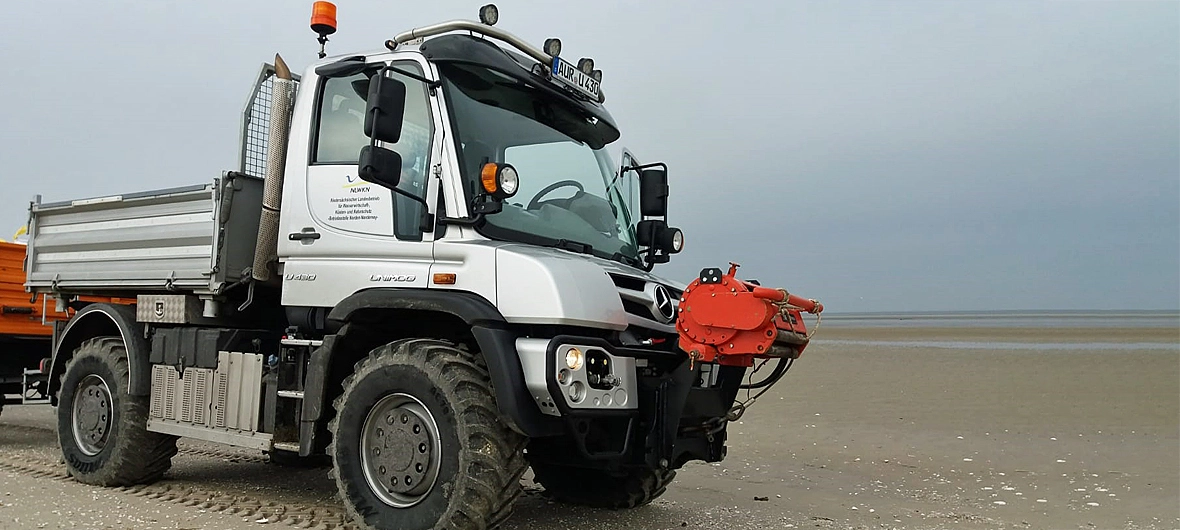
Versatile on both sides of the dike.
The all-rounder from Daimler Truck is part of the coast guard's fixed inventory. Since the establishment of the state-owned organisation in 1998 – even before NLWKN operated under its current name and was also responsible for nature conservation tasks in the country. “We use the Unimog for a variety of tasks every day,” reports Carina de Vries. All-wheel drive and differential lock as well as 431 mm ground clearance thanks to ex-works portal axles make it a versatile work tool on both sides of the dike.
Thanks to the off-road capability of the Unimog, the coastal protection site in Hilgenriedersiel can supply the surrounding two depots on the mainland and seven depots on the islands with everything they need: from building materials such as wood or stone for paving work or fence material – to restore pastures, for example – to work equipment for mowing the dikes.
No load too big, no task too complex.
Coastal protection also benefits from the Unimog’s permissible gross weight of up to 14 t and a gross combination weight of up to 40 t. The vehicles enable options such as connecting a low loader with which the Unimog pulls the two tracked excavators onto the barges (transport vessels without engines) in order to bring them to their respective place of use.
The Unimog lends a hand to the Bayer Uerdingen e.V. sailing club when towing yachts.
However, the Unimog is also used when the excavators need to be repaired. Or if they need to be supplied with mobile tank systems. And with a top speed of 89 km/h, it is also fast on the road.
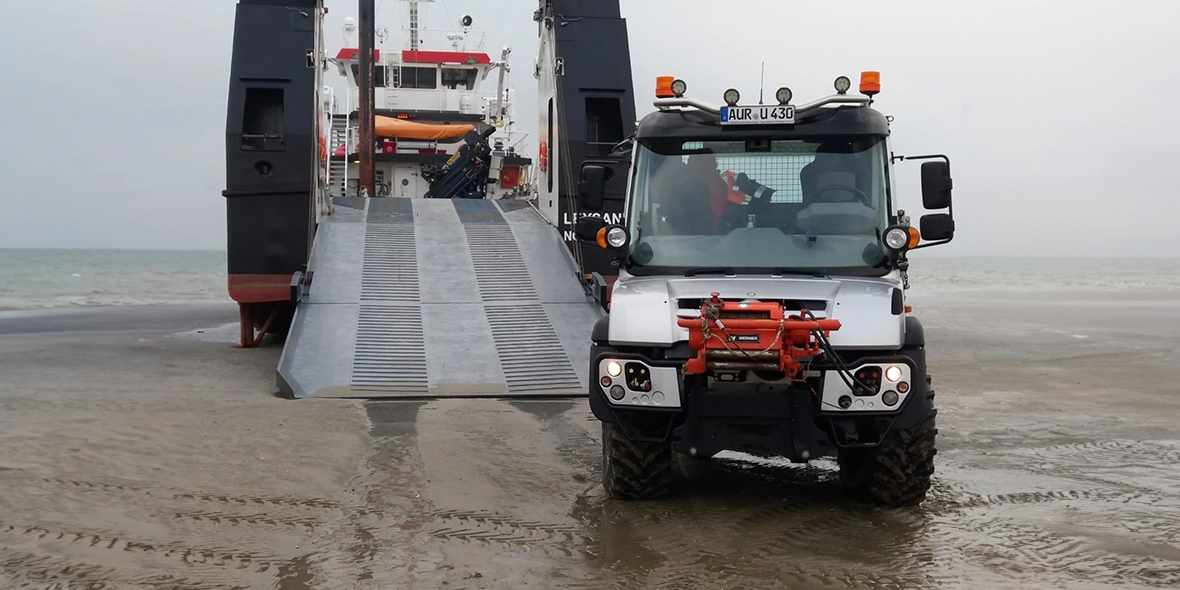
A companion for all seasons.
In Hilgenriedersiel, the Unimog U 430 is in use all year round. In summer, when the dikes of the East Frisian islands need to be mowed and mulched, the implement carrier scores high marks with its powerful front and rear PTO shaft. These allow it to use all its engine power for implements such as – in this case – mowers.
In winter, the Unimog takes care of removing the flotsam and jetsam which accumulates over the year on the flatter summer dikes upstream of the main dike line.
Considering the many tasks that the special truck takes on, Carina de Vries and NLWKN are more than happy to have the all-rounder from Mercedes-Benz in their fleet.


